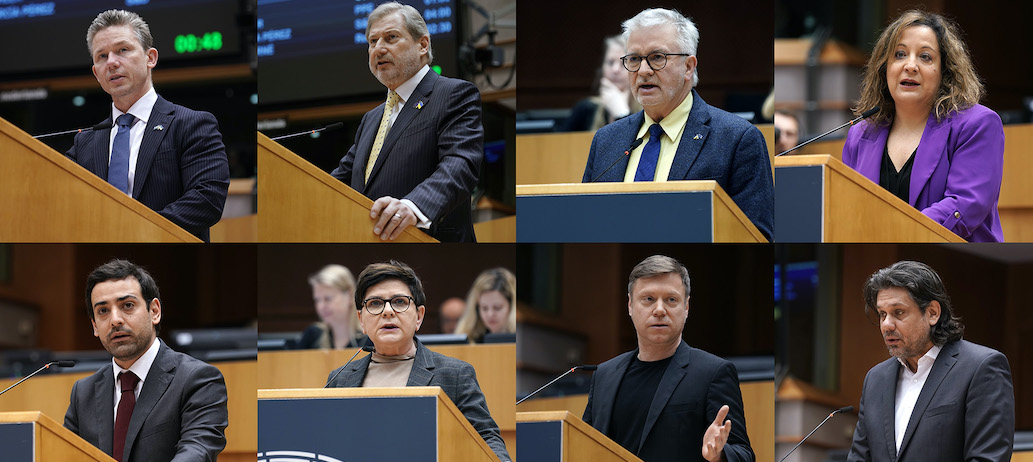
Data science and artificial intelligence (AI) are changing our lives for the past few years and the revolution they are provoking tend to be exponential. Some sixty years after the first scientific papers on AI have been published, there are innumerous knowledge-intensive busines services being developed, but the digital transformation of the public sector is also ramping up at unprecedent levels.
Examples include data handling and analysis in public health, land register and sustainable land management for fire prevention, biodiversity management, protection of space assets, data analysis for consumer protection, or accident and disaster prevention, among many other areas of critical relevance in the public domain and public-private interactions (e.g., www.incode.pt). On the one hand, states as political authorities are designing policies to protect citizens from AI-related harms and risks, whilst on the other hand public administrations have shown a clear interest in using AI-enabled systems and technologies in order to improve their processes, services and policies. It is under this context that the experience of the Portuguese Initiative on Digital Sills, INCODE.2030, has shown that it is becoming critically relevant the need to foster research of public interest among the AI research communities in close cooperation with public administration.
Understanding knowledge as our common public good will allow citizens to be an integral part of future developments and will drive policy-makers to better understand how AI and data science can be used and further developed to make public services more effective and deliver seamless services, cutting down on digital bureaucracy. In addition, it will drive new policy options targeted to enhance the governance and regulation of AI in the public sector, aimed at ensuring high standards of conduct across all areas of public sector practice, promote public sector effectiveness and deliver better service to its users.
This is because AI has the potential to significantly contribute to the problem solving of long-standing issues in the public sector, such as large unmanageable caseloads, administrative burdens, delays in service delivery and language barriers including automated working processes, as well as improved decision-making and service quality. However, the associated risks and challenges are relatively unknown, potentially threatening the secure and successful implementation and application of AI at large. The reliance of AI developments -in terms of design, production and even management- also poses a challenge for upholding transparency and accountability standards in the public sector.
Against this background, pilot projects to foster the adoption of AI-enabled innovations in the public sector through public-private interactions are critically relevant to support redesigning governance processes and policy-making mechanisms, as well as to improve public services delivery and achieve a responsible combination of new, large data sources with advanced machine learning algorithms. Three critical examples include:
- Sustainable land management for carbon neutrality
Moving towards carbon neutrality will depend, above all, on the way we will be able to guarantee that all civil protection services, forest guards, public and private land users and actors (including municipalities and land governance institutions, as well as firms and individual land owners) have access and are equipped with adequate systems for sustainable land and integrated forest fire management based in very high resolution satellite-based Earth Observation system fully integrated with advanced Information systems, Artificial Intelligence methodologies and high performance computing capacity, as well as user-friendly computer interfaces, to effectively support sustainable land management and guarantee fire prevention.
This has been promoted by the Portuguese Space Agency in close cooperation with other European authorities in fire prevention and land register in order to contribute to:
- monitoring forest biodiversity and decrease the likelihood of extreme and severe fire events;
- support forest fire risk governance and management mechanisms to minimise the impact of forest fires in by 50% in 2022 and 85% by 2025, as compared with 2021;
- monitor fuel management effort in wildland/rural urban interface and in forest areas, risk assessment and support real time fire risk monitoring and exposure of highly sensitive area; and
- support law enforcement operation towards compliance of fuel management regulation around building and critical infrastructures and support a flexible tasking of surveillance and suppression resources considering risk and uncertainty, encapsulating intra-spatial and temporal variability.
Again, understanding the triangulation of new knowledge, institutional innovation and new observation methods will be critically relevant because:
- forests can play different roles in the carbon cycle, from net emitters to net sinks of carbon, because forests sequester carbon by capturing carbon dioxide from the atmosphere and transforming it into biomass through photosynthesis. Sequestered carbon is then accumulated in the form of biomass, deadwood, litter and in forest soils. Release of carbon from forest ecosystems results from natural processes (respiration and oxidation), as well as deliberate or unintended results of human activities (i.e. harvesting, fires, deforestation).
- Forests and their role in the carbon cycle are affected by changing climatic conditions. Evolutions in rainfall and temperature can have either damaging or beneficial impacts on forest health and productivity, which are very complex to predict. Depending on circumstances, climate change will either reduce or increase carbon sequestration into forests, which causes uncertainty about the extent to which forests are able to contribute to climate change mitigation in the long term. Forest management activities have the potential to influence carbon sequestration by stimulating certain processes and mitigating impacts of negative factors.
- Forest ecosystems in the European Union, for example, play multiple significant roles, including carbon sequestration. It is estimated that the forest biomass in the EU27 countries contains 9.8 billion tons of carbon (tC). The total CO2 emissions of the EU27 countries in 2004 was 1.4 billion tons of carbon. This means that the amount of carbon emitted every year by the EU27 equals to nearly one-seventh of the carbon stored in the EU27 forests. As a result, the value placed on forests in the EU can be seen as a viable way of mitigating GHG emissions through carbon sinks and sequestration.
Overall, improved public services coupled with public-private interactions on sustainable land management depend on a responsible combination of new, large data sources with advanced machine learning algorithms oriented to:
- assure the monitoring of CO2 sequestrated in soil and vegetation through a very high resolution database, aiming for a sustainable forest, contributing for an effective 55% reduction of CO2 emissions by 2030 and full carbon neutrality in 2050; and
- promote a new market for very high resolution (i.e. submetric) satellite-based Earth Observation systems fully integrated with advanced Information systems, through revised legal systems imposing that all municipalities and land governance institutions, as well as firms and individual land owners, are properly equipped with high resolution, space-based fire prevention and sustainable land management systems.
But these goals can only be achieved through a concerted action oriented to promote:
- Advanced Information systems and Artificial Intelligence methodologies: on-line forecast/AI modelling of “fire risk level” with a capacity of 90% accuracy prediction over 3 days in advance and the necessary release of early warnings, together with on-line capacity for dynamic forecast of carbon cycle and the prediction of levels of carbon stock and sequestration into forests; Machine learning algorithms crossing information from different sources and types, to accelerate land identification;
- High performance computing capacity: capacity for on-line weather forecast and massive calculations of soil parameters and levels of carbon sequestration.
- Providing users with a decision support system that, through probabilistic risk modelling and scenario planning trade-off analysis, using the best available information (submetric resolution and near real-time data of weather conditions and land use and landcover) and processing capacity, allows practitioners to prioritize investment decisions regarding landscape planning and fuel management at national, regional and sub-regional scale. The core value of such a decision support tool, resides in using a quantitative wildfire exposure assessment to map, compare, and inform management priorities in vast areas.
- Interoperability platforms that enable better land management by providing information from landowners but also from central administration (fostering the “once only” principle) and municipalities.
- Preserving coastal areas
Europe has the world longest continental length of coastal areas, which provide accommodation and living conditions of about 40% of European population (i.e., over 160 million people). It is under this context that the Atlantic International Research Center (AIR Centre; www.aircentre.org ) is promoting an open observation platform for new business development making use of an integrated advanced information system, including a dedicated low-orbit satellite constellation, different types of in-situ sensors and new AI-based functions. It is the only sustainable way to provide capabilities contributing to the socio-economic development of a sustainable European “Blue economy”.
It is designed as a user-oriented, research-driven platform bring together key strategic partners operating in the Atlantic, the Artic, the Baltic and the Mediterranean to guarantee a deep understanding of space-climate-oceans interactions through a new generation of optical sensors with a spatial resolution better than 1 m and in future reaching down to 1 cm and an adequate temporal resolution based on fully continuous, on-line images.
This is because, knowledge of seas and oceans is proving increasingly important in solving the keys of climate modelling and future climate predictions. Environmental protection and climate adaptation and resilience are already strategic topics for coastal areas maritime regions. The use of space technology, in particular all types of Earth observation data and applications, is an essential element for the development of activities and research in this area. From an environmental point of view, oceans and seas are key for monitoring and understanding climate change and their balance is under significant threat from pollution.
From an economic point of view, the relevance of emerging forms of the “blue economy” are important in that their conditions impact the transportation sector, energy sector, and food sector. As a source of limited (and often threatened) resources subject to exploration interests from many parties, a fair allocation and oversight can be achieved with proper monitoring and inspection mechanisms in place. Tourism related to maritime activities is also expected to grow with a challenge to keep it eco-friendly.
From a safety and security point of view autonomous shipping, piracy and smuggling are all elements of importance, as well as system alerts for threats such as tsunamis and other extreme weather conditions that can pose danger to coastlines and recreational navigation. For the latter, services associated with Search and Rescue are expected to have a higher demand and include more sophistication and inter-operability between space and terrestrial/maritime means.
Coastal zones are among the most productive areas on Earth, providing a wide range of valuable ecosystem services to populations and wildlife. These areas are being severely threatened by both anthropogenic impacts (e.g. pollution, physical changes, loss of habitats, urban sprawl) and environmental changes (e.g. sea level rise, water temperature increase, coastal erosion, ocean acidification).
The total value of the services produced by marine and coastal ecosystems is valued at USD$ 29.5 trillion per year. But ocean and sea health is more than wealth.
A consideration and critical appraisal of these challenges and risks, which can be technological implementation-related, legal-regulatory, ethical, and social in nature, is mandatory for a responsible, secure, and expedient approach to AI. Overcoming these challenges and risks will be decisive for the future success and acceptance of AI in the public sector and society.
- Protection of space assets in the era of “New space”
The consequence of the changing economic environment of space activities is a strong increase in the number of satellites in orbit, notably with the development of so-called mega-constellations and the emergence of “New Space”. The cost of sending satellites into space is continuously decreasing, notably due to the use of re-usable launchers and the development of micro-launchers. At the same time, the development of small satellites is lowering the price tag to take payloads into space. This has attracted venture capital given that the potential return on investment is growing.
Since the beginning of the space race, about 6,000 launches have put in orbit 11,800 satellites of which 4,550 are currently operational[1]. It is estimated that more than 20,000 additional satellites will be launched in the next ten years[2]. This growing number of satellites increases the complexity of space operations and makes it impossible to safely operate a spacecraft not taking into account other spacecraft.
In addition, the rise in number of satellites and space traffic activity increases the volume of debris generated and the risk of collisions. Already today, there are around 128 million pieces of debris smaller than 1cm orbiting Earth, and approximately 900,000 pieces between 1 and 10cm. The current count of large debris (defined as 10cm or larger) is 34,000[3].
Following the recently adopted Agenda 2025 of the European Space Agency (ESA) through the “Matosinhos Manifesto” (November 2021) and the European Commission Communication of February 15, 2022, Space is clearly increasingly contested, threatening the security and resilience of space assets and highlighting the urgent need for international discussions to agree on and implement norms of responsible behaviour in outer space by state and non-state actors. Especially in the area of outer space around Earth that includes all orbits below 2,000km (i.e., Low Earth Orbit – LEO), and is the home of the International Space Station and of thousands of other satellites, is rapidly becoming a hazardous area due to space debris and inoperable spacecraft orbiting at very high speeds.
The development of automatic collision-avoidance services in space and the use of artificial intelligence will to cope with the increased number of space objects.
[1] Source: Eurospace. More than 470 spacecraft were launched every year in 2017, 2018 and 2019, while only 110 spacecraft were launched on average per year between 2000 and 2013
[2] An indicative list: Space X Starlink, Amazon Kuiper, the success of One Web, Boeing V-band, Iceye, Kepler, Telesat LEO, Spire, Theia, etc.
[3] Source: ESA

















